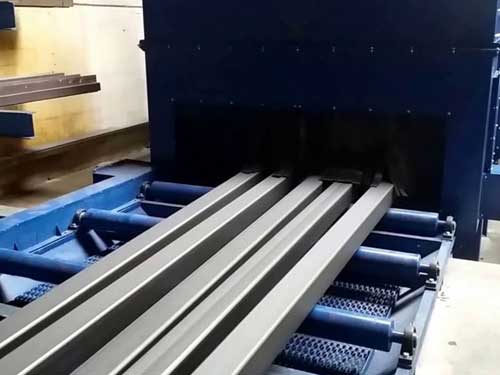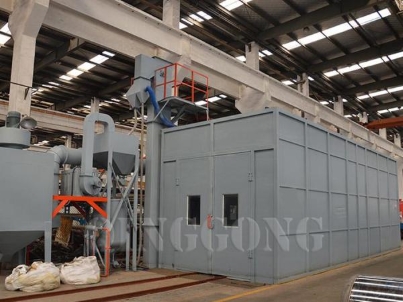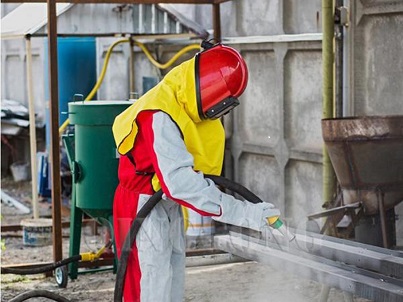Shot peening is divided into shot blasting and sandblasting. There will be great hitting force and obvious cleaning effect if the surface is treated by shot blasting. However, shot blasting is easy to deform the thin plate workpiece, and the impact of steel shots (whether shotblasting or shot peening) on the surface of the workpiece will deform the metal substrate. There is no plasticity in Fe3O4 and Fe2O3, and they will be peeled off after crushing, while the oil film will deform with the base material together, so for the workpiece with oil stain, shot blasting and shot peening can not completely remove the oil stain. Among the existing surface treatment methods, sandblasting process has the best cleaning effect.
Sandblasting process is suitable for cleaning the surface of workpiece with higher requirements. However, the current general sandblasting equipment in our country is mainly composed of primitive and heavy sand conveying machinery such as hinged dragons, scrapers, bucket elevator, etc.. Users need to build a deep pit and waterproof layer to install machinery. The construction cost is high, and the maintenance workload and maintenance cost are huge. A large amount of silica dust generated in the sandblasting process cannot be removed, which seriously affects the health of operators and pollutes the environment.
Shot strengthening is divided into general shot blasting and stress shot blasting. In general shot blasting process, when the steel plate is in free state, high-speed steel shots are used to hit the inside of the steel plate to produce the compressive pre-stress on the surface to reduce the tensile stress on the surface of steel plate and increase the service life. Stress shot blasting is a process to bend the steel plate in advance under a certain force, and then carry out the shot blasting process.
 EN
EN
 fr
fr  de
de  es
es  it
it  ru
ru  pt
pt  ar
ar  th
th  pl
pl  ro
ro 


